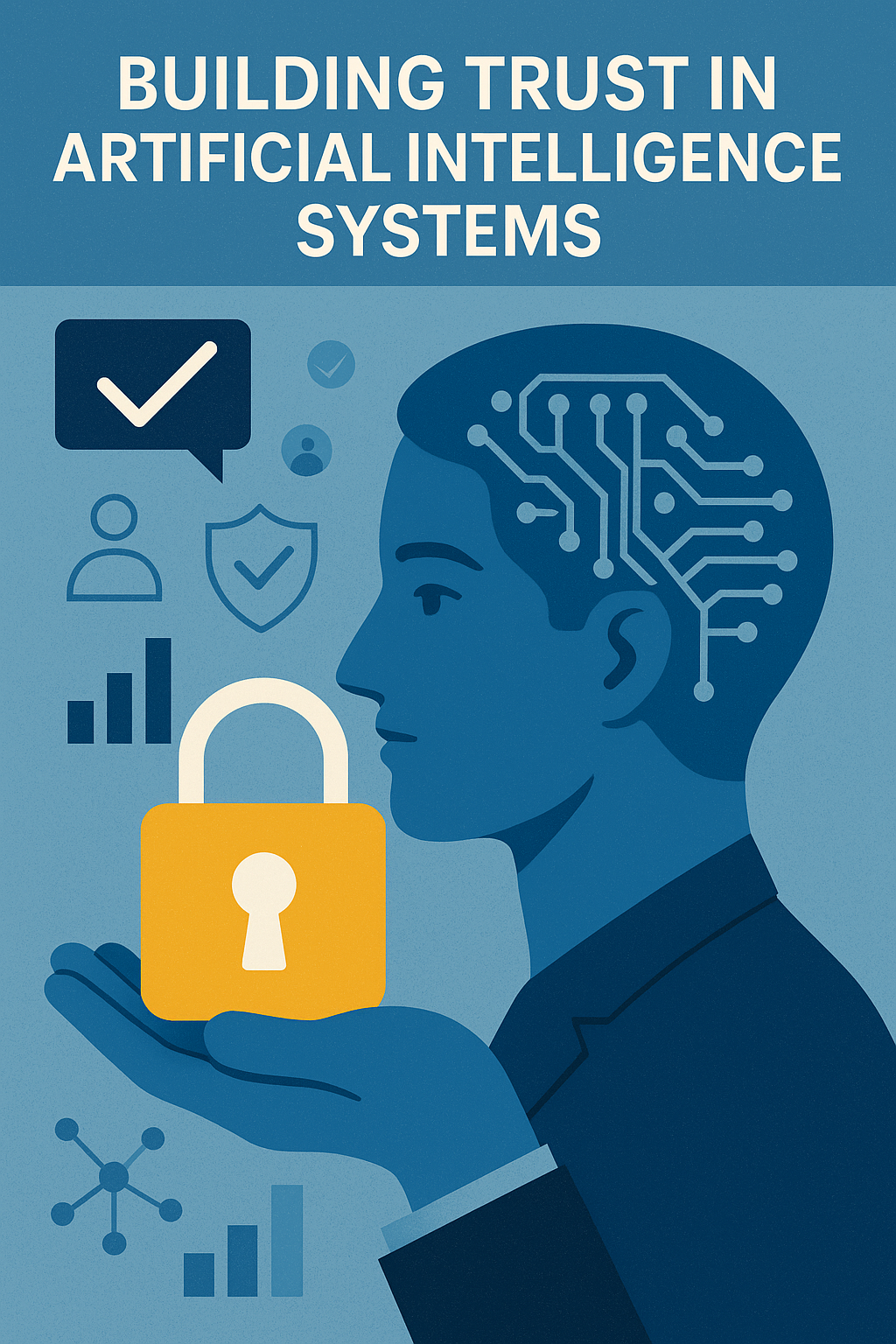Executive Summary
Building trust in AI is essential for its success in business and society. Trustworthy AI systems must be transparent, fair, secure, and aligned with human values. In this blog, we examine the key principles that define trustworthy AI, explain why they matter, and explore how organizations can build systems that people trust.
Explore how governments, companies, and developers can work together to ensure responsible and ethical AI deployment.

Career Accelerator – Head of Data, Analytics, and Machine Learning By Uplatz
Introduction: Why Building Trust in AI Is Essential
Artificial intelligence is now a central part of everyday life. From virtual assistants to fraud detection and healthcare diagnostics, AI drives innovation and efficiency. However, despite its benefits, AI also raises crucial questions:
Can we trust it?
Is it fair?
What happens when it fails?
Building trust in AI goes beyond technical functionality. It requires public confidence in how AI is created, used, and monitored. Without trust, even the most advanced systems can fail in public acceptance. For this reason, trustworthy AI is not just a feature—it’s a necessity.
In this blog, we unpack the essential components of trustworthy AI, explore global frameworks for ethical development, and look at companies leading by example.
What Makes AI Trustworthy?
1. Transparency and Explainability
Transparency allows users to see how an AI system was built, trained, and deployed. Explainability takes this further by helping users understand specific decisions made by the system.
Example: If an AI model denies a loan, users should know why. Tools like SHAP and LIME help visualize decision-making factors.
Without explainability, users lose confidence—especially in sensitive sectors like finance and healthcare.
2. Fairness and Bias Mitigation
Many AI systems inherit bias from the data they’re trained on. Building trust in AI requires eliminating discriminatory outcomes.
Key strategies include:
-
Using diverse training datasets
-
Measuring fairness (e.g., demographic parity)
-
Applying bias-correction methods
-
Involving ethicists and diverse teams
Bias mitigation is an ongoing responsibility, not a one-time task.
3. Robustness and Reliability
AI systems must be resilient under stress, errors, or novel inputs. Robustness means consistency, even in unpredictable scenarios.
Best practices:
-
Stress testing and adversarial training
-
Cross-validation across datasets
-
Monitoring for performance drift
-
Implementing fallback mechanisms
This is critical for safety in areas like autonomous driving or medical analysis.
4. Security and Privacy
To earn user trust, AI must protect sensitive data and defend against misuse. Systems handling health or financial data must adopt strong security protocols.
What this includes:
-
Encryption and secure storage
-
Privacy-by-design principles
-
Adherence to GDPR, CCPA, or other regulations
-
Clear user data policies
A breach not only harms users—it damages long-term trust in AI.
5. Human-Centered Design and UX
AI must empower users, not replace them. Trust increases when systems are intuitive and offer clear feedback.
Considerations for user trust:
-
Easy interaction and control
-
Ethical and inclusive design
-
User training and documentation
-
Seamless integration with daily workflows
Trust grows from consistent, positive human-AI interaction.
Global Frameworks for Trustworthy AI
Numerous global bodies have established ethical guidelines to promote building trust in AI:
-
EU AI Act: Mandates transparency, human oversight, and safety for high-risk AI.
-
NIST AI Risk Management Framework: Offers guidance on identifying and managing AI risks.
-
OECD AI Principles: Focus on fairness, transparency, and sustainability.
-
Corporate Leaders:
-
Microsoft emphasizes responsible AI principles.
-
IBM promotes transparency and accountability.
-
KPMG offers a Trusted AI Framework.
-
These frameworks aim to embed ethical thinking into AI from design to deployment.
Real-World Examples
Several organizations are setting benchmarks in building trust in AI:
-
Adobe Firefly: Discloses training data sources, helping users understand model learning.
-
Microsoft: Shares human-AI interaction guidelines focusing on safety and usability.
-
Starbucks: Uses a transparent recommendation engine tested for bias.
-
Google PAIR: Provides user-friendly tools and design patterns for ethical AI.
-
Espoo, Finland: Applies explainable deep learning in child welfare decisions.
These initiatives show that ethical AI isn’t just good practice—it also boosts engagement and brand loyalty.
Conclusion: The Future Depends on Building Trust in AI
The potential of AI is vast—but it can only be realized through trust. Building trust in AI requires:
-
Transparency
-
Fairness
-
Security
-
User-centered design
Organizations that embed these principles will not only meet compliance but also create meaningful, lasting impact.
As AI continues to shape our world, trust must be the foundation—not an afterthought.
- European Commission – Ethics Guidelines for Trustworthy AI https://digital-strategy.ec.europa.eu/en/library/ethics-guidelines-trustworthy-ai
- NIST (National Institute of Standards and Technology) – AI Risk Management Framework https://www.nist.gov/itl/ai-risk-management-framework
- OECD (Organisation for Economic Co-operation and Development) – Principles on Artificial Intelligence https://oecd.ai/en/ai-principles
- Microsoft – Responsible AI Principles https://www.microsoft.com/en-us/ai/responsible-ai
- DARPA – Explainable Artificial Intelligence (XAI) Program https://www.darpa.mil/program/explainable-artificial-intelligence
- KPMG – Trusted AI Framework https://advisory.kpmg.us/articles/2021/trusted-ai-framework.html
- IBM – Principles of Trust and Transparency in AI https://www.ibm.com/artificial-intelligence/ethics
- Adobe – Firefly Generative AI Model Transparency https://www.adobe.com/sensei/generative-ai/firefly.html
- Google – People + AI Guidebook https://pair.withgoogle.com/guidebook
- Salesforce – AI Transparency and Confidence Features https://www.salesforce.com/news/stories/ai-trust-transparency/
